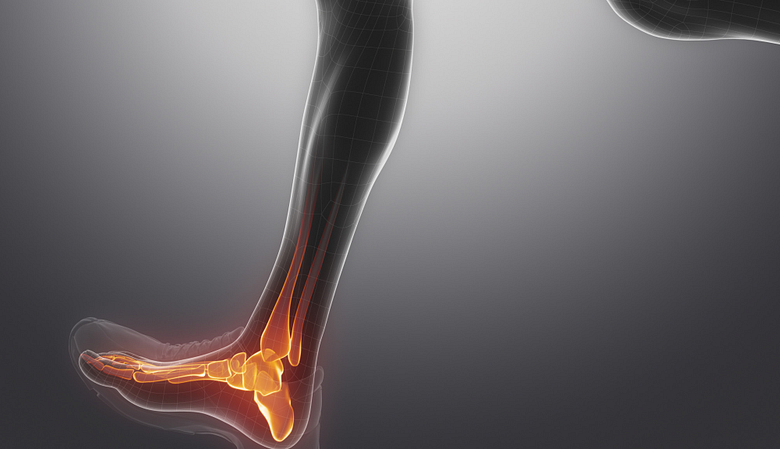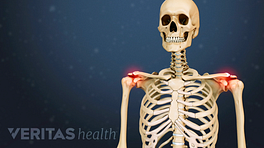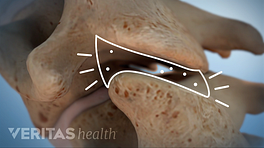Ankle pain, stiffness, and joint cracking or popping are classic signs of ankle osteoarthritis. These symptoms are often blamed on an old injury acting up. Left untreated, these symptoms can gradually worsen and start to interfere with everyday activities.
Ankle pain, stiffness, and swelling from walking are common with ankle osteoarthritis.
In This Article:
- What Is Ankle Osteoarthritis?
- Ankle Osteoarthritis Symptoms
- Ankle Osteoarthritis Causes
- Ankle Osteoarthritis Diagnosis
- Treating Ankle Osteoarthritis
Common Signs and Symptoms of Ankle Osteoarthritis
Pain is the most common symptom of ankle arthritis, but there are many others. Recognizing these symptoms can help lead to early treatment.
Ankle pain
People may experience pain in the lower shin (tibia), back of the foot, or middle of the foot. The pain may be aching and dull or sharp and intense. The pain may come and go or there may be a chronic low level of pain with intermittent flare-ups of more intense pain. In the early stages, many patients report experiencing pain only after certain activities that place strain on the ankle joint, such as jogging or extended walking. Typically, this ankle pain can be lessened with rest, elevating the foot, and an ice compress.
Ankle stiffness
Joint swelling and bone friction make the ankle stiff and less flexible. The ankle’s range of motion can become more limited, making it difficult to point and flex the foot or move the foot side-to-side.
Ankle swelling
When ankle cartilage wears away, the fibula, tibia and talus bones can rub together, resulting in irritation. The ankle may produce excess joint fluid in an attempt to reduce the friction. This excess fluid results in swelling.
Ankle popping or crunching
Sensing a crunching or hearing a popping or squeaking sound when pointing or flexing the toes is a sign that that cartilage has worn away and is not protecting the bones from friction. The medical term for this symptom is "crepitus." (Crepitus without other symptoms is not a cause for concern.)
Ankle instability
Walking may occasionally cause the ankle to lock or buckle, potentially causing the ankle to turn out or in. (These episodes can be reduced or eliminated by wearing supportive footwear with low heels.)
Gait is affected
Advanced osteoarthritis can cause the ankle cartilage to deteriorate unevenly. The bones and joint material can shift in an effort to compensate for the uneven deterioration. This can affect the way a person walks and eventually even cause arthritis in the knee and hip joints.
Inactivity makes symptoms worse
Ankles can become stiff after prolonged inactivity. People with ankle osteoarthritis may find that stiffness and pain are most noticeable when they try to get out of bed in the morning or out of a chair after a long period of sitting.
In most but not all cases, the symptoms of ankle osteoarthritis come and go, becoming worse and more frequent over months or years. Left untreated, ankle arthritis has the potential to severely impede mobility.
On the other hand, getting treatment in the early stages of arthritis can significantly slow the progression of symptoms.










